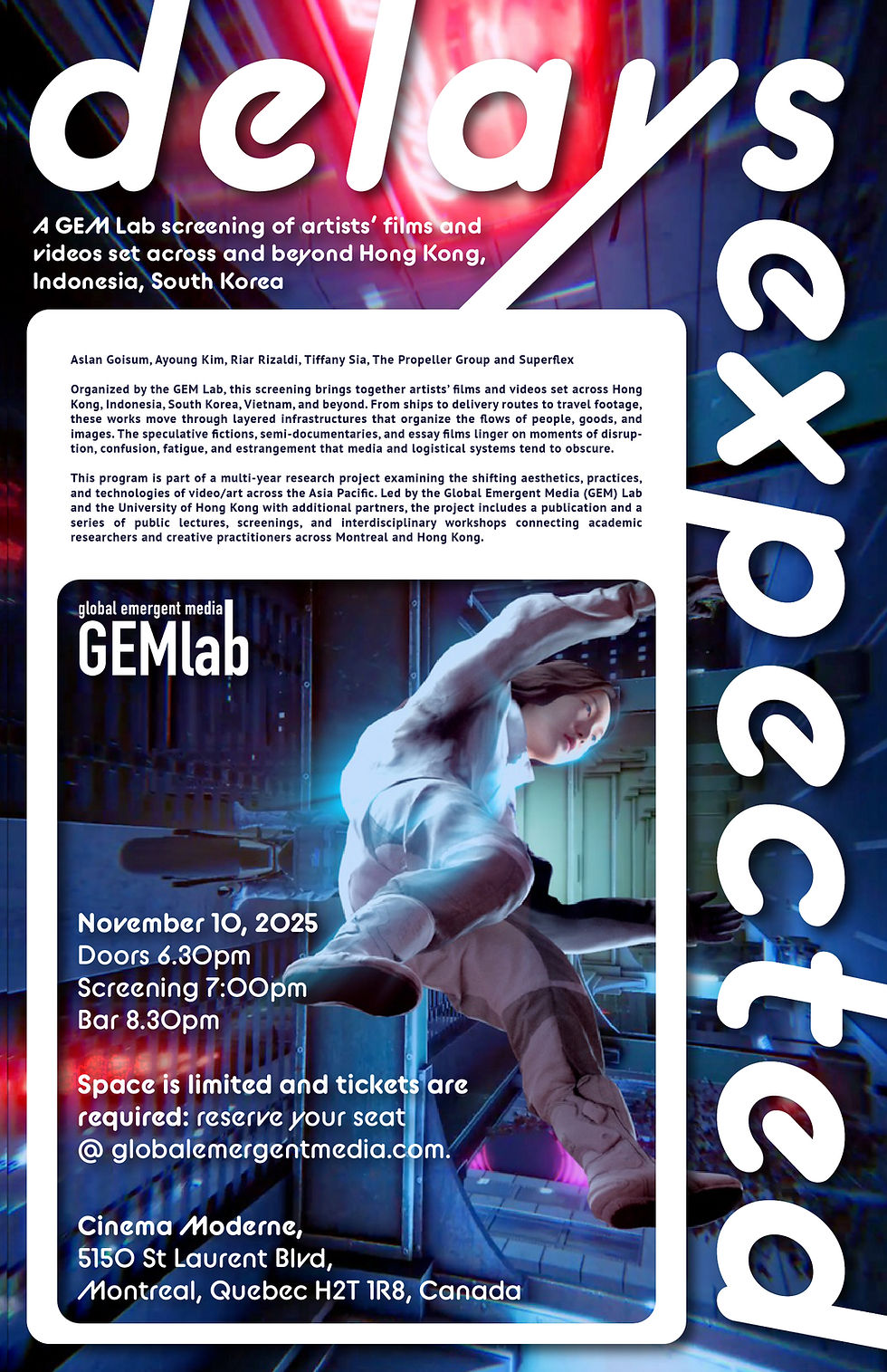Animating Television Reading Group
- GEM LAB

- Sep 25, 2019
- 2 min read
Updated: Nov 15, 2019
This group will examine the objects, subcultures, and ecologies emerging from the nexus of animation and television. Television, in particular, television animation, has often been considered a “bad object”, yet we find television animation to be at the centre of many important discourses (such as the shift to streaming, fan cultures, transmedia developments, etc.) and game-changing media objects (queer representation in Steven Universe, for example).

Some of the guiding questions and topics include, but are not limited to:
Examining the production, distribution, and reception contexts of television animation and its impact on queer representation. TV animation is increasingly a key site for groundbreaking queer representation. Studios are more comfortable with queer reprenstation on the small screen, especially in animation, before the big screen.
The movement in and of television animation. Studies of transmedia and media mix, including fan subcultures and discussions of media ecologies, are much more pronounced in animation than other media forms. (See Steinberg, 2012).
The distribution architecture of the internet and of the flow of cultural content through online video/ streaming. (Anderson-Lehman, 2018).
One key project in the realm of queer representation and streaming is the project Open TV . Despite producing a number of web series, the creators of Open TV insist they are making television. What, then, is at stake politically with the use of the term ‘television’?
Animation as a means of understanding the contemporary media moment.
Schedule:
Sept 30th, 6pm: What is animation? What is television?
Feuer, Jane. “The Concept of Live Television: Ontology as Ideology.” Regarding Television: Critical Approaches--an Anthology, edited by E. Ann Kaplan,
Lamarre, Thomas. Anime Ecology: A Genealogy of Television, Animation, and Game Media. Minneapolis: University of Minnesota Press, 2018. Chapter 7.
Carol Stabile and Mark Harison, eds. Prime Time Animation: Television Animation and American Culture. New York: Routledge, 2003. Ch 2.
Oct 21st, 6pm: Queer TV Animation
Cooley, Kevin. “Drawing Queerness Forward: Fusion, Futurity, and Steven Universe,” Palgrave, forthcoming 2019.
Munoz, Jose Esteban. “Queerness as Horizon: Utopian Hermeneutics in the Face of Gay Pragmatism,” Cruising Utopia, NYU Press, 2009, pp. 19-32. (or the Intro, TBD)
Butler, Judith. “Subversive Bodily Acts: Bodily inscriptions, performative subversions,” Gender Trouble, Taylor and Francis, 2006 (1990), pp. 175-193.
Some chapter or essay on Queer TV (looking into it!)
Nov 4th, 6pm: Franchises and Fans.
Jenkins, Henry. Convergence Culture. 2006. Selections TBD.
The Franchise Era: Managing Media in the Digital Economy (Edited by James Fleury, Bryan Hikari Hartzheim, Stephen Mamber). Selected chapter TBD.
Mizuko Ito, “As Long as It’s Not Linkin Park Z”: Popularity, Distinction, and Status in the AMV Subculture, Fandom Unbound.
Nov 25th: Fans and Fandom Part 2.5D
Sugawa-Shimada, Akiko. Rekijo, pilgrimage and ‘pop-spiritualism’: pop-culture-induced heritage tourism of/for young women. Japan Focus 27 (1). 2015.
Silvio, Teri.Informationalized affect: the body in Taiwanese digital video puppetry and COSplay. Embodied Modernities: Corporeality, Representation, and Chinese Cultures. 2006.
Silvio, Teri. Animation: The New Performance? Journal of Linguistic Anthropology 20 (2). 2010.
Okabe, Daisuke. Cosplay, Learning, and Cultural Practice. Fandom Unbound. 2012
Early December: Guest Speaker: Edmond (Edo) Ernest dit Alban
January: Affect and Desire
Rest TBA
To sign up please access this link : https://forms.gle/Fj7QMitMWedVrGn6A
- Jacqueline Ristola, Cole Armitage



Comments